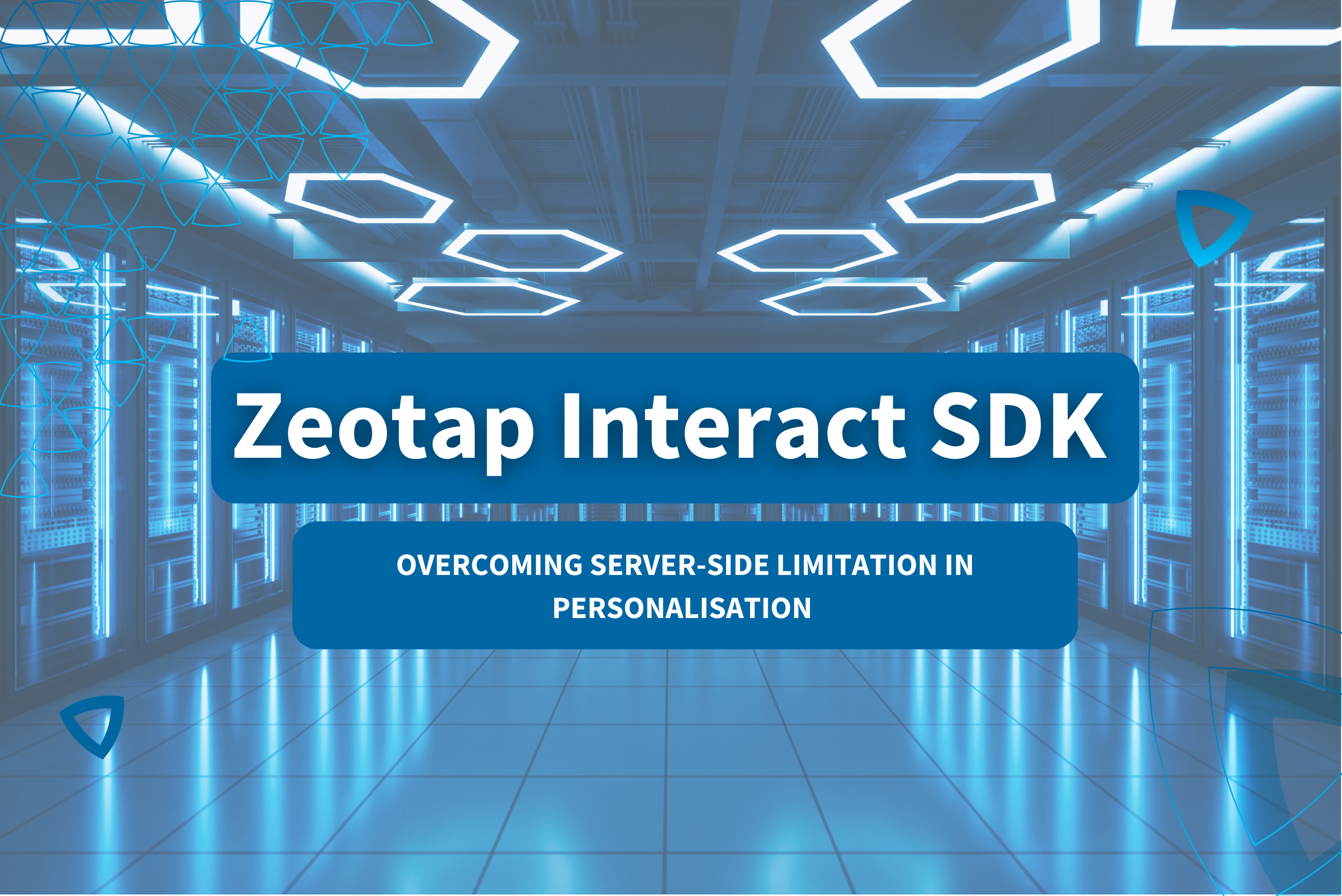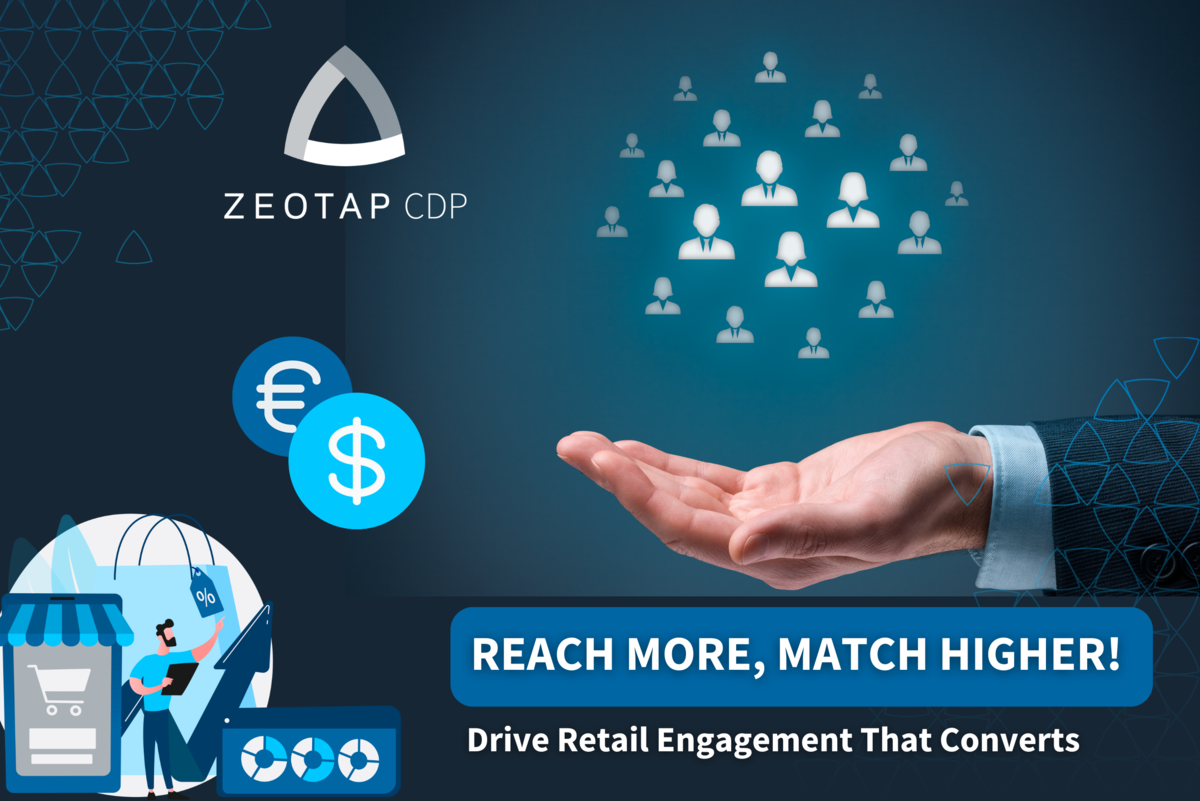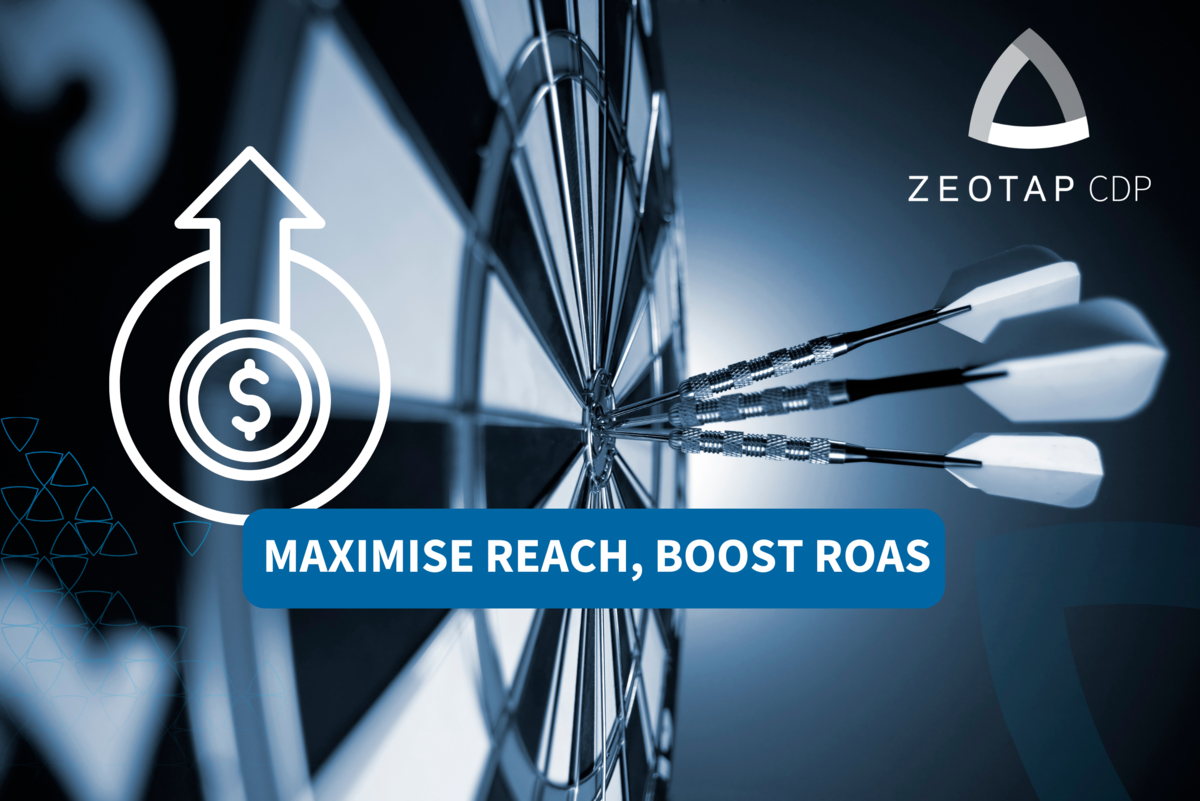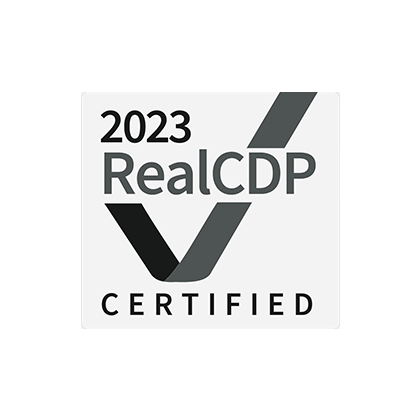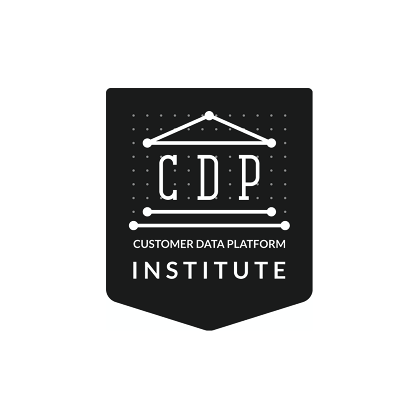Although we all know how critical data is to driving business growth, many businesses today still struggle with the volume and challenges associated with unlocking its true potential—specifically, the ability to collect, manage, organise and analyse multiple data sources under one roof and then to action it.
If you want your data investments to truly pay off, a clear data strategy is the answer. But what is a data strategy, and where do you even start with building one? Our comprehensive guide covers everything you need to know.
What is a data strategy?
A data strategy is a plan that aims to improve all the ways your business acquires, manages, stores, shares and uses its data. It’s officially defined by the MIT CISR Data Board as a “central, integrated concept that articulates how data will enable and inspire business strategy”.
Ultimately, data strategies ensure that all of a business’s data resources are organised in a way that enables them to be moved, shared and used with ease and efficiency.
Data is no longer just a byproduct of running your business – it’s a vital asset that can drive decision making and processing (and revenue). To that end, a data strategy helps to ensure a business’s data is treated as an asset by managing and using the data, defining goals and objectives about effective and efficient data usage across departments and projects and ensuring it is privacy compliant.
This provides common objectives, methods, practices and processes to manipulate, manage and share data throughout an organisation.
Why do you need a data strategy?
There are a multitude of reasons why businesses need to establish data strategies, and it all comes down to one factor: data is a critical business asset, and should therefore be treated like one.
On a business level, data strategies can:
- Define how the business can meet its goals using its data
- Set out the changes an organisation needs to make to maximise the value of its data, and create an actionable timeline for the organisation to work toward regarding milestones, priorities and future data management strategies
- Define financial implications and benefits of data activities, and display actionable insights that can be used to increase business profits and monetise data
But there are other, wider benefits too:
-
Data strategies unlock the value of data
Data is the new currency of business. Organisational leaders understand this well, but unlocking its value can be a challenge because they might not know how to put this into action. This is where a data strategy can have tangible impact by supplying employees with guidance as to how to use, manage and share data.
-
Data strategies effectively handle the vast volume of data available to businesses
In the last two years, 90% of the data in the entire world has been generated. And as the volume of data grows exponentially, managing, storing and using it becomes increasingly challenging, and so the need for a comprehensive data strategy grows.
-
Data strategies solve company-wide data challenges
When a company is faced with data issues, its first instinct is often to find the short-term solution. But this point-based approach can be inefficient in solving long term problems, as well as those which span department or project boundaries.
Data access and usage are organisation-wide needs, which make it beneficial to implement a company-wide solution. Creating this type of plan ensures that data management is improved across the whole organisation by enabling various departments to work in alignment with one another, rather than against each other.
-
Data strategies prevent data silos
Without a data strategy, different departments will likely store, manage and resolve data-related issues independently of one another. That means that different departments might transfer raw data into whichever format is available to them, which could cause company-wide data access and transfer issues. This approach not only leads to wasted resources but also potentially exacerbates the creation of data silos.
Under a data management strategy, however, each department will follow the same guidelines that define which format data should be in, as well as how it can be shared and accessed. This prevents data silo creation, makes accessing the data easy and efficient for multiple departments and individuals, and supports the creation of unified data profiles.
The 5 Core Components Of A Data Strategy
Historically, data strategies have largely focused on data storage. This addresses some tactical aspects of data management but doesn’t plan for improving the acquisition, management, sharing and usage of data.
Successful data strategies should address data storage as well as take into account the way that data is used. To achieve that, data strategies should comprise five main components that work seamlessly together. These are: identify, store, provision, process and govern, and we go into more detail on all of them below.
Identify
The purpose of the identify component in a data strategy is to identify data, and understand its meaning regardless of its structure, origin or location.
If the data is structured or unstructured, without a name, defined format and value representation, manipulating and processing it just isn’t feasible. Instead, establishing consistent data element naming and value conventions is key to data usage and sharing.
Just as vital is having a means of referencing and accessing the metadata associated with datasets, i.e their definition, origin, location and domain values. Successful data usage depends on the existence of such metadata to help retrieve specific data elements and overall help to identify and diversify different datasets.
Without a means of referencing and accessing metadata, a business is unlikely to know the location and meaning of all of its data, as well as its numerous sources. In addition, failure to incorporate data identification details would result in new data inventory and analysis efforts each time new data needed to be included in processing or analysis activities.
Ultimately, failures to identify data and metadata would lead to companies ignoring their most prized data assets through the inability to know that it even exists. If the business’s data is truly an asset a data strategy must include an identification component.
Store
In a data strategy, the storage component places data in a structure and location that supports easy shared access and processing.
Data storage is a basic capability in all business technology stacks. Businesses will have methods for identifying and managing the storage needs of their application systems, but this commonly only reflects a data creation perspective and does not encompass sharing and usage needs.
The gap in such an approach comes when there needs to be a way to efficiently manage the storage required to share and move data between systems. A gap is often formed due to the transactional nature of visible data sharing. Transactional details between applications are often only moved and shared to complete specific business processes, resulting in bulk data sharing not being understood, or perceived as an infrequent occurrence.
However, with the growing volume of data available to businesses and the rise in big data, bulk sharing is now becoming increasingly common across businesses and industries.
As a majority of the shared content can be categorised as either internally created data, such as customer details or purchase history, and externally created data, such as cloud application data, third-party data or syndicated content, lack of a centrally managed data sharing process will force systems to individually manage the space created – meaning that fragmented copies of the source data will emerge.
A good data strategy will ensure that data created is efficiently stored, and available for future access, without needing individuals to create their copies. CDPs in particular can help with this, as all 1st, 2nd and 3rd-party data is stored in the platform (including private information such as customer names, postal addresses, emails, phone numbers). Plus, CDPs can connect to advertising tools found in tech stacks, which allows them to store DMP-type information like cookie IDs with audience tags.
Provision
The provision component of a data strategy packages the data in a way that it can be reused and shared, as well as providing rules, access and guidelines for the data.
When data is shared, it is usually packaged by the application developer and not the data user. Whilst in previous years this approach may have worked when only a few systems and fewer teams needed access, it is no longer so efficient in today’s world where there are dozens of systems, teams and applications which rely on data from multiple sources to support business processes.
Packaging and sharing data from a single source developer and then training individuals in learning the idiosyncrasies of a multitude of different source application systems so that they can access and use the data is a drain on business resources and time.
Because sharing data is now a critical business need as data has to support operational and analytical purposes, the method for data packaging and sharing is no longer a one-off: it must be consistent across applications.
For a company’s data to truly become an asset, a data strategy should address data provisioning as a standard business procedure and present guidelines dictating how the data must be packaged and prepared for sharing.
Process
In a data strategy, the process component aims to move and combine data that resides in disparate systems to provide a unified and consistent data view.
At the time of creation, data is a raw commodity that has not been prepared, transformed or corrected to make it ready for use. So a data strategy process is the key component that addresses the activities required to transform data from a “raw material” into a usable asset.
Likewise, data generated from an application is also a raw commodity. At most organisations, data will originate from internal and external sources. Internal data may be generated from dozens of application systems, whilst external data may be provided through cloud applications or data providers.
Though the data will contain a wealth of information, it will not have been packaged in the manner that is necessary for it to integrate with a combination of sources that exist across businesses.
So, to make the data ready for use, a series of steps must be undertaken to correct, format and transform the data. The result of the process is a series of similar data sets that can be either integrated or merged by data users with a set of preparatory tasks specific to the individual’s needs (i.e analytics, data sharing, processing or transaction).
Govern
The final component in a data strategy is governing the data by establishing, managing and communicating information policies for effective data usage.
The biggest challenge with data governance is adoption. Many data governance initiatives begin by addressing specific issues, like data accuracy or terminology, and are then confined to either specific organisations or projects.
However, the reason for establishing a governance framework is to ensure that the rules, details usage, manipulation and management of the data are known by all other data constituents who would have access to, or the need to use, the data.
Put simply, the role governance plays within a data strategy is to ensure that data is managed consistently throughout an organisation. Data governance shouldn’t serve to limit data access or insert an unusable level of gatekeeping that interferes with data usage: data governance’s premise is simply to ensure that data is easy to access, use and share throughout the organisation.
How To Build A Successful Data Strategy
Step 1 – Create An Initial Proposal to Attain Organisational Buy-in
The first step towards developing a strong Data Strategy is by creating a proposal, which then needs approval for implementation: this includes executives as well as those lower on levels of command who’ll also need resources allocated. If you need some help with creating a proposal, it would be a good idea to use proposal creation software.
To get buy-in from top-level organisational leadership, the strategy will need to show how it benefits the organisation.
An adjoining economic report can be crucial for this and may help with gaining trust by providing clear examples of how competitors are using data or making a claim about something related to which there’s competition. Using hard numbers behind claims can back these up, and make points regarding competitors more effective.
Alongside top-level organisational leadership, you’ll also need to get buy-in from department leads, technology partners and any other employees who use or manage large quantities of data. Attaining as much buy-in as possible is vital because the more people that participate in your strategy, the higher its chances of success.
Earning buy-in can take some time, so remember that you can always revisit your proposal and your strategy to make necessary changes.
Step 2 – Build Your Data Management & Governance Team
Once you’ve got the agreement needed, start building your data management team. Senior-level managers and department heads who have an understanding of how valuable data can be in today’s market should mainly comprise this group, alongside people from various departments – including those knowledgeable about technological and organisational capabilities.
Ensure to first evaluate in-house employees to find the correct fits, and if the necessary expertise is not available, or you want a team member solely focused on data governance, then look to hire externally.
Once you’ve assembled your team, assign data governance roles to its members. This step includes determining who is responsible for things like ensuring compliance with data privacy standards and keeping employees up to date with policy changes. Having well-defined roles helps ensure that necessary tasks get done whilst promoting a sense of ownership.
Though the buy-in of executives and department heads is responsible for the creation and implementation of the data strategy, it is your data management team who are ultimately responsible for allocating resources, improving policies and managing data-related issues and organisational activities – so choose wisely.
Step 3 – Identify The Data You Want To Collect, Why & Where It Will Come From
The next step is to determine what data you’ll need and how it can be obtained. Your business goals will dictate the kinds of information needed for them: for example, a marketing agency looking to capitalise on lucrative content opportunities may evaluate data taken from internet searches around a particular topic, or data taken from discussions on social media platforms.
On the other hand, if a business is using online advertising to target new, relevant customers for its products, it may aim to collect first-party demographic data from its website and then seek to enrich its data with reliably sourced second or third party data, which matches the original datasets demographics, to optimise its targeting opportunities.
Describing which data you need to collect, what purpose it serves and where it will be collected from ensures that you are likely to collect only the correct, relevant and necessary data.
Step 4 – Ensure Your Data Collection is Compliant with Data Protection Regulations
When collecting data, it must be compliant with external digital marketing compliance regulations like GDPR, CCPA or CAN-SPAM laws. Marketing teams need to comply with regulations if they want their work not only to be accounted for, but to also be successful.
To comply with privacy and security regulations, marketing compliance strategy steps can be implemented within your data strategy. Marketing compliance strategies follow four simple stages of implementation, starting with documenting an approval process that ensures data collected is collected in line with legal and ethical responsibilities, to collaborating across departments to ensure everyone is using the same processes, and resulting in an actional compliance checklist that includes giving users access to things like “opt-out” choices.
To find out more about how to keep your data collection compliant, you can read more about the best practices to follow in our blog here.
Step 5 – Set Data Strategy Goals
Another important element of building a data strategy is determining specific measurable goals. It’s important to establish both long-term and short term objectives, as well as those that apply locally within departments or teams. For example, the question “What do we want this department/team to accomplish by next year?” should be answered with information about how they plan on using data in achieving their desired result(s).
Data strategies will enable different departments to identify goals for each discipline area. Specific, short-term objectives that are achievable and measurable in implementing your policy related to the collection, storage and sharing of company data can be used by senior management and data management teams as they progress through plans on how to best use their information whilst protecting users’ privacy.
Step 6 – Create Your Data Strategy Roadmap
Once goals are agreed upon and set, the next stage is to outline plans for how the organisation will look to achieve them. These plans are what make up the roadmap of your data strategy.
For every goal that has been set, there should be an actionable plan as to how to accomplish it. Plans should be specific and include information like who owns the goal, which technology and process they will use, the cost of reaching the objective, the time needed to achieve the goal and the intended outcome of completing the objective. Plans should also remain flexible to account for unforeseen circumstances or unexpected changes.
Your data strategy roadmap will outline how you plan to achieve your ultimate long-term goal and vision, as well as define the smaller short term goals that will help to accomplish it.
Step 7 – Data Storage & Organisation
Another important element of data strategies is the inclusion of policies related to the storage and organisation of data. These particular elements of data management are vital because they dictate how actionable and shareable your data is.
Data storage is a simple technology capability, but the methods for data storage vary significantly across organisations. So, when creating data storage plans things like the amount of storage capacity needed, how the organisations approach storage and its implications on data storage and usage should be taken into consideration.
The way that data is stored and organised significantly affects data access, identification and use, as well as influences how easy it is for different departments to access and share the data.
To that end, the goal in creating any data storage and organisation plan is to ensure data remains accessible, shareable and actionable for all parties that need it. A good rule of thumb is to store the data in an easily accessible system and in a consistent format to prevent silos.
Step 8 – Submit The Business Case & Begin Implementation
Once your goals are in place, and your data roadmap is laid out, your data strategy is ready for implementation. Its final stage is to be presented into a business plan and distributed to senior leadership for approval.
The overall business plan should include all the activities involving the data that will be used to achieve the outlined goals, as well as the resources needed to successfully implement the strategy including budgetary requirements, processes and organisational structures.
Once approval is gained from the business leadership, your data strategy can be implemented and actioned. However, data strategies are not one-off implementations – they should be regularly reviewed and adapted depending on how the business is progressing toward its goals.
Data Strategy Examples
Sales Team Example
Scenario
A sales department in a business may have raised concerns about the amount of fragmented information they have about users. Unifying data profiles and providing information like previous product sales may enable the sales team to increase profits by being better positioned to close sales.
Data strategy resolution (How)
A data strategy will unify customer profiles and provide seamless customer and product data to the sales department.
Data strategy provides (Why)
Using the strategy, the sales team will have access to the customer’s current status, any open or unresolved issues, as well as their customer and product profitability numbers. Blending data taken from a Customer Relationship Management platform (CRM), alongside operational, historical, customer and product profitability data will ultimately result in stronger and more profitable customer relationships.
The Overall Value to the Organisation
Increased customer satisfaction and overall profitability, resulting in revenue growth for the business.
Customer Care Team Example
Scenario
Results from a survey from a customer care team in a B2C business provided feedback that customer support representatives are currently unsatisfied and frustrated with the amount of information they can access about customers. A new competitor has recently come online and early reports indicate that the customer account view is much more seamless and detailed than the existing businesses.
Data strategy resolution (How)
Using a data strategy, the business will enable its customer support reps to see a 360° view of their accounts.
Data strategy provides (Why)
Using data collected from a Customer Data Platform (CDP), a data strategy will aim to create unified and holistic profiles that allows easy access to desired customer information. A support rep who wants an overview of a customer’s payment history, order history, current products they have on order and delivery statuses would be able to receive this information quickly and accurately in order to better assist a customer.
The Overall Value to the Organisation
The business receives higher customer satisfaction levels, lowers customer support costs and increases sales by reducing the lengthy support process needed to ascertain the desired information.
Summary
So, there you have it – eight steps to building a comprehensive data strategy that unlocks the value of data for your business. If you need help putting these into practice, or want to discuss your specific needs in more detail, book your free demo, or get in touch with us. We’d be happy to chat with you about how Europe’s privacy-first CDP can help kickstart your data strategy and make sure it meets all the requirements set out by GDPR and beyond.
